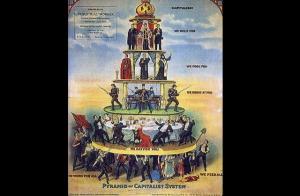Discover the DIFFERENCES between macroeconomics and microeconomics
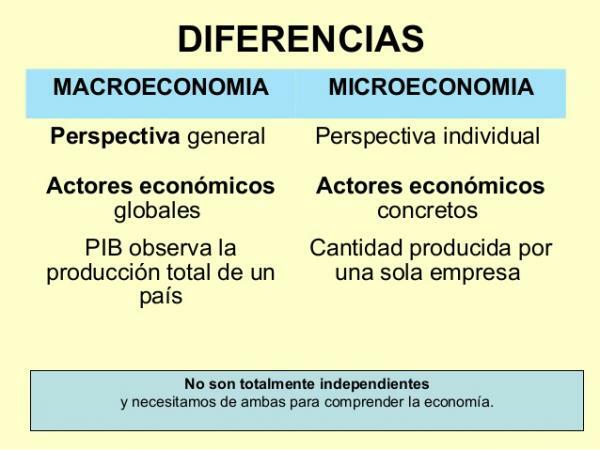
Image: basic economics
In previous lessons we have talked about the great importance of the economy, and how there are a series of branches of the economy that are used to study all its values. The branches that we have talked about the most, due to their great importance, are macroeconomics and microeconomics, since between the two they study most of the economy. For all this, today in this lesson from a TEACHER we are going to talk about differences between macroeconomics and microeconomics.
Index
- What is macroeconomics?
- What is microeconomics?
- 5 differences between macroeconomics and microeconomics
What is macroeconomics?
To talk about the differences between macroeconomics and microeconomics, we must first know a small definition of both branches of the economy, to better understand the scope of each of them.
The macroeconomyit is one of the many branches that deals with the study of economics. Its main function is to study the economy of a country as a whole
, serving to understand the economic situation of a state and its evolution. The term "macro" in its name refers to the fact that it is a branch that is responsible for studying large economic indicators, greater than the agents that study other branches such as microeconomics.It could be said that macroeconomics studies the global economic values by studying different variables such as goods and services or unemployment. Thanks to this, he is able to see the evolution of a country, to find a way to improve its economy.
To analyze and prevent the economic situation of a country, macroeconomics uses three different types of variables, which serve to see economic evolution, although not without certain problems. The three variables are as follows:
- Gross domestic product: GDP is used to calculate the goods and services of a given country for a given time.
- Gross national product: The GNP is used to see the goods and services produced over a period of time.
- Net national product: The PNN is the sum of all the investments of a state.
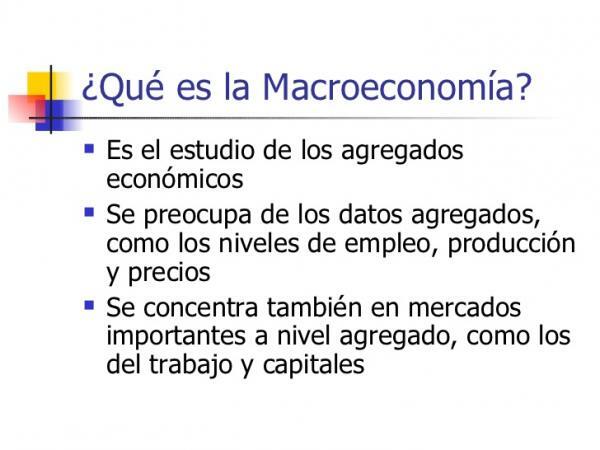
Image: Slideshare
What is microeconomics?
The other major branch of economics is microeconomics. Its function is to study the economic movements of the different economic individual agentss, such as the consumers or families. For this reason it is called microeconomics, since the “micro” refers to the fact that it is in charge of smaller economic agents than other branches, such as macroeconomics.
Microeconomics is very useful for looking at market structures, and trying to avoid monopolies and other forms of imperfect markets. The different theories of microeconomics help us to see how the competition evolves in the market for a specific product, and to try to avoid monopolies and seek a free market.
Microeconomics is largely based on the use of different economic theories, which are useful for your studies. Some of these theories are as follows:
- Consumer theory: Study the factors that go into a consumer's choices.
- Demand theory: Study how the quantity of goods and services varies depending on the demand.
- Producer theory: Study the behaviors of the producer.
- General equilibrium theory: Study the relationships between the different theories of microeconomics.
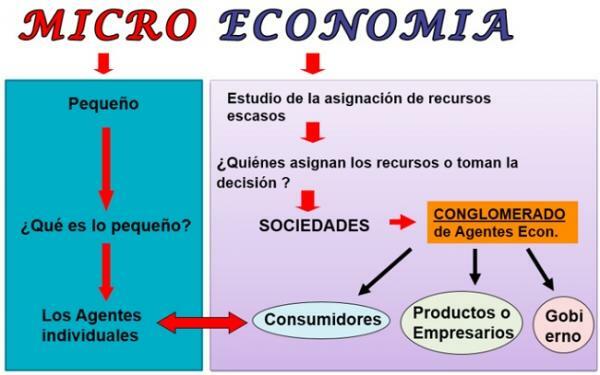
Image: Financial Encyclopedia
5 differences between macroeconomics and microeconomics.
Once both branches of the economy have been defined, we must talk about the differences that exist between the two, some of which we already know thanks to the previously explained definitions. Some of these differences are as follows:
- Macroeconomics seeks a general study of economics, while the study of microeconomics is individual. This is where their names come from, "macro" to refer to the general, and "micro" to refer to the individual.
- The agents of macroeconomics are global, such as countries, while agents individual of microeconomics are those that form macroeconomic agents, such as families and companies.
- Both branches use variablesBut while in microeconomics the variables are individual, in macroeconomics the variables are aggregates, that is, sums of many individual variables.
- Both branches are related to each other, there are situations that both study, although in different ways. Both must work together for a better understanding of the economy.
- Macroeconomics is very useful for studying economics globally and of a specific country, while microeconomics is useful for studying smaller things, such as labor economics.
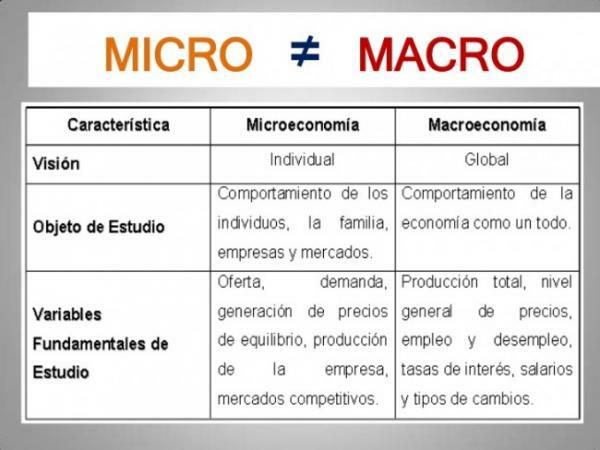
Image: Pure Marketing
If you want to read more articles similar to Macroeconomics and microeconomics: differences, we recommend that you enter our category of Economy.

